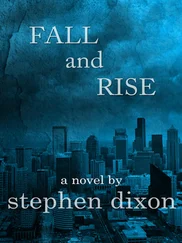It’s unclear what effect those added security measures might have had on Atta and Omari’s plans. During the two previous months, Atta had purchased two Swiss Army knives and a Leatherman multitool with a short knife. During his trip to Spain earlier in the summer, Atta reported to his al-Qaeda contact that he and two fellow pilot trainees, Marwan al-Shehhi and Ziad Jarrah, had been able to carry box cutters onto planes during their test flights. It’s unknown whether Atta or Omari carried those or other weapons through security in Portland or Boston on September 11, but even if they had, it might not have mattered to ground screeners. Federal rules in place in the summer of 2001 allowed airline passengers to carry knives with blades shorter than four inches. Although security screeners had discretion to confiscate short-bladed knives using “common sense,” government studies showed persistent gaps in the performance of low-wage human screeners. They worked for the airlines and consequently were encouraged to keep security lines short and fast-moving. Screeners were supposed to conduct “random and continuous” checks of carry-on bags, but in practice that rarely happened.
Gaps in airport security went deeper than screening rules and personnel. For instance, once a would-be hijacker passed the security checkpoint, he had every reason to think he was in the clear, with no worries about being confronted on a domestic flight by an armed air marshal. In 2001, the FAA employed only thirty-three such marshals, a sharp drop from the 1970s, and they were assigned exclusively to international flights considered to be high risk. That was the case despite a statement published by the FAA just eight weeks before September 11 in the Federal Register : “Terrorism can occur anytime, anywhere in the United States. Members of foreign terrorist groups, representatives from state sponsors of terrorism and radical fundamentalist elements from many nations are present in the United States. Thus, an increasing threat to civil aviation from both foreign sources and potential domestic ones exists and needs to be prevented and countered.”
THE US AIRWAYS flight from Portland landed in Boston at 6:45 a.m., leaving Atta and Omari plenty of time to catch American Flight 11 to Los Angeles, departing from Terminal B. They passed through security screening at Logan Airport, again without incident. Within minutes of arriving in Boston, Atta received a call on his cellphone from a pay phone in Logan’s nearby Terminal C, which served planes from United Airlines, among others. The caller was a key collaborator in Atta’s deadly plan.
The two men waited at Gate 32 with other passengers, but before boarding Flight 11, Atta had a strange interaction. First Officer Lynn Howland had just arrived in Boston after copiloting the red-eye flight from San Francisco on the plane that would be redesignated American Flight 11. As she walked off the 767 and entered the passenger lounge, a man she didn’t know approached her and asked if she’d be flying the plane back across the country. Based on his clothing, he looked like a pilot hoping to catch a ride to Los Angeles on an available jump seat.
“No, I just brought the aircraft in,” Howland told him.
The man abruptly turned his back and walked away. Later she identified him as Mohamed Atta.
As he boarded Flight 11, Atta asked a gate agent whether the two bags he’d checked earlier in Portland had been loaded onto the plane. Atta had reason for concern about his suitcase, especially if someone familiar with Arabic decided to search it prior to Flight 11’s takeoff. Inside his black rolling Travelpro bag was the handwritten instruction letter about how to prepare spiritually and logistically to hijack a plane. Even without knowledge of Arabic, a sharp screener might have grown suspicious when he or she noticed the videotaped lessons on flying Boeing jets, the other pilot gear, the folding knife, and the canister of “First Defense” pepper spray. To track down Atta’s bags, the gate agent called Flight 11’s ground crew chief, Donald Bennett. He reported that the two bags had arrived, but too late. His crew had already loaded and locked the big jet’s luggage compartment, and the airline’s desire for on-time departures prohibited reopening it so close to takeoff. Because the bags had previously passed through security, no one had reason to inspect them just because they arrived late. Atta and Omari’s bags got new tags, for a later flight to Los Angeles.
At 7:39 a.m., Atta and Omari stepped aboard and found seats 8D and 8G, the middle pair of Flight 11’s two-two-two business cabin seat configuration.
Already seated were Saudi Arabian brothers Wail and Waleed al-Shehri, in seats 2A and 2B, in the first row of first class. The plane didn’t have a Row 1, so those seats placed them directly behind the cockpit. Their checked bags were selected for explosives screening at Logan, just as Atta’s and Omari’s had been in Portland. No explosives were found, and the bags were loaded aboard Flight 11. Under the new FAA rules, just like Atta and Omari, neither Shehri brother had to undergo an added personal screening such as a pat-down or carry-on search for weapons or contraband.
The fifth member of their group, Saudi native Satam al-Suqami, didn’t undergo added screening, either. Shortly after Atta and Omari boarded, Suqami made his way to seat 10B, on an aisle in business class.
The five men had chosen their seats aboard Flight 11 in a way that gave them access to the aisles and placed all of them close to the cockpit. By chance, Suqami’s seat in business class put him directly behind tech entrepreneur and former Israeli commando Daniel Lewin.
FLIGHT 11 HAD a capacity of 158 passengers, but as the crew prepared for takeoff, only 81 seats were filled: 9 passengers in first class, 19 in business class, and 53 in coach.
Shortly before takeoff, American Airlines flight service manager Michael Woodward walked aboard for a final check.
In first class he found Karen Martin, the Number One, or head flight attendant, who was known for running an especially tight ship. Tall and blond, forty years old and fiercely competitive, Karen was described by friends as “Type A-plus.” Nearby stood thirty-eight-year-old Barbara “Bobbi” Arestegui, the Number Five attendant, petite and patient, known for her ability to calm even the most difficult passenger.
Michael asked if they were ready to go.
“Yep, everything’s fine,” Karen Martin said. Michael spotted his friend Kathy Nicosia, the Number Two attendant, and waved.
Before he left, Michael scanned down the aisle, almost out of habit, to see if the attendants had closed all the overhead bins. As he looked through the business section, Michael locked eyes with the passenger in seat 8D. A chill passed through him, a queasy gut feeling he couldn’t quite place and couldn’t shake. Something about Mohamed Atta’s brooding look seemed wrong. But the flight was already behind schedule, and Michael wouldn’t challenge a passenger simply for glaring at him. He turned and stepped off Flight 11, and a gate agent closed the door behind him.
Buttoned up and ready to go, crew and passengers aboard Flight 11 began the usual drill: seats upright, belts fastened, tray tables secured into place, cellphones switched off. Flight attendants buckled into jump seats. Its wings loaded with fuel, the Boeing 767 rolled back from Gate 32. Inside their locked cockpit, Captain John Ogonowski and First Officer Thomas McGuinness Jr. taxied the silver jet away from the terminal.
Cleared for takeoff, they turned onto Logan’s Runway 4R and checked the wind speed and air traffic. They took flight at 7:59 a.m., becoming one of the roughly forty-five hundred passenger and general aviation planes that would be airborne all across the United States by late morning.
Читать дальше












